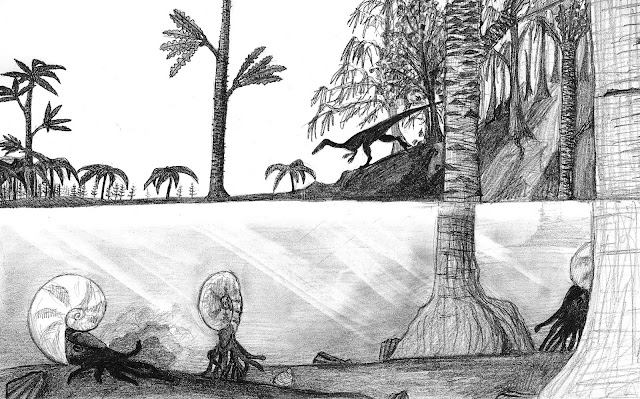There has been a suspicious increase in paleo-illustrations of dinosaurs tromping through an icy field with snow on the ground. It seems logical that such creatures, in subarctic landscapes, would have a coating of feathers, thus supporting the idea of feathered dinosaurs (some dinosaurs did have feathers, by the way), which could be taken as evidence for evolution. Indeed, if there was such an "age of dinosaurs" than we would expect to find dinosaurs in existence in every environment. Why should they be devoid of the poles?
The Heiberg, an ecosystem that is now deposited in northern Canada, may demonstrate that the earth was indeed tropical from pole to pole or, more likely, it demonstrates that, during the global flood, the remains of an ecosystem were carried far from it’s original location. The habitat seems to be of a fairly typical Triassic type, but sampling is insufficient, at least in regards to animals. Plant evidence is fairly complete and illustrates that the habitat was probably a tropical swamp of some sort, possibly a kind of coastal mangrove. To evidence this, bennettites (a cycad-like tree with unique reproductive structures) have been found with bivalve mollusks between their roots in some places. The other trees in the forest are cycads, gingkoes, and araucarias (monkey puzzle trees). It would have been a strange jungle with a groundcover of a variety of ferns species and a couple species of horsetails on the muddy shoreline. The mud of the swamp teamed with a couple species of bivalve mollusks while, amid the water between the trunks of bennettites, ammonites suspended themselves to wait for a passing meal.
The Heiberg is a great example of a tropical environment uncovered near the north pole. Some pond slowly buried over millions of years? I think not. It is another piece of evidence against the uniformitarian way of thinking. Things have not always been the way they are now.


That was very interesting, Caleb. I never considered that there would 'not' be dinosaurs at the poles. I believe that the climate all over the earth, not only at the poles, was much different than it is now... 4000 years can bring a lot of changes :^)
ReplyDeleteMom